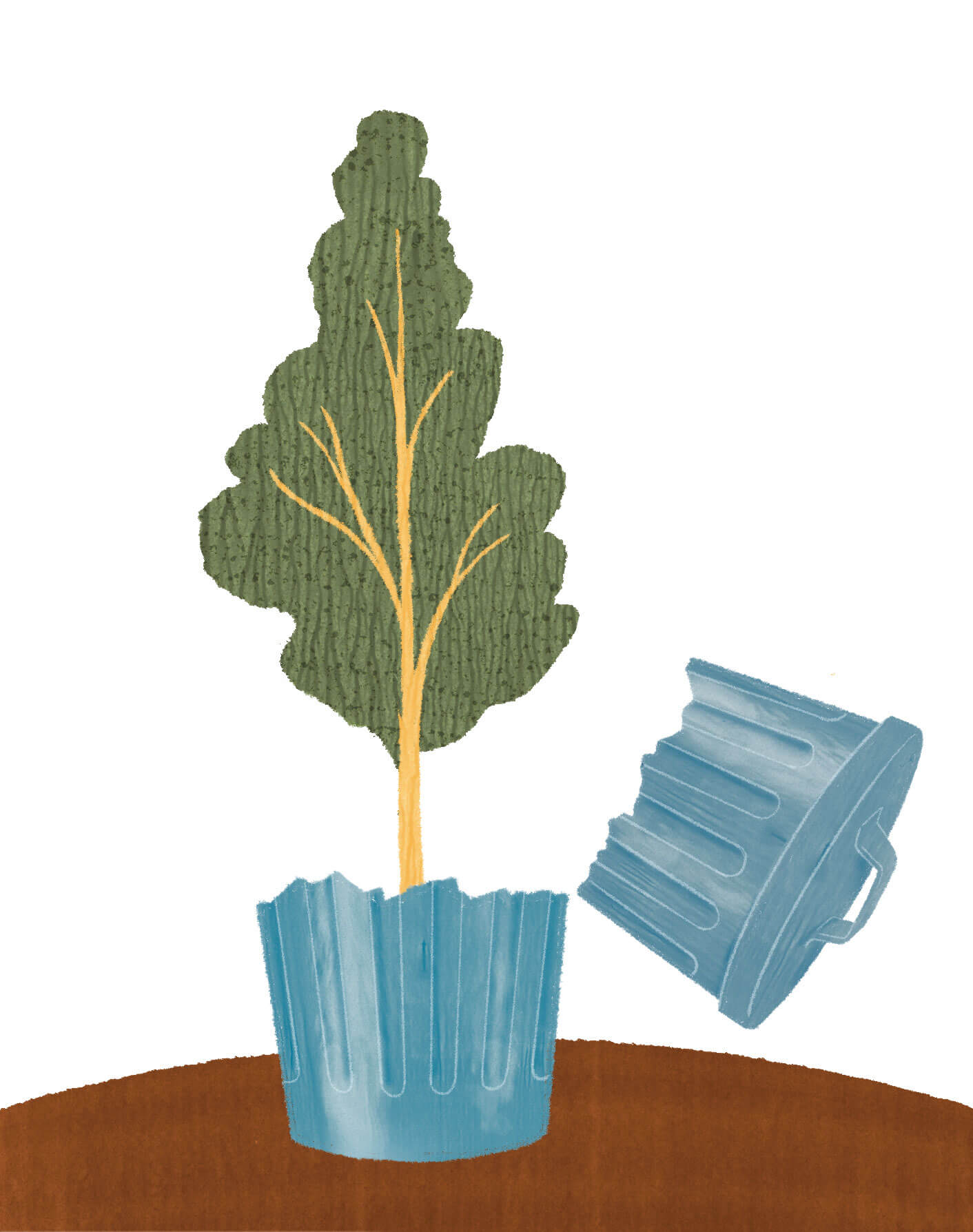
The Ripple Effect
How small individual acts can lead to big change.
While thinking about climate change can be overwhelming, Nancy Mezey, a professor of sociology and dean of the Honors School, says that “we all have to pick our little piece of the world and try to make it better.”
Here, she and several other professors offer ideas that can help anyone spark change in their own corner of the world.
Compost
When you throw food away in a garbage can, it typically winds up in a landfill. When food breaks down in that environment, it undergoes an aerobic decomposition that produces methane. If you instead compost your food scraps (banana peels, coffee grinds, egg shells, etc.), the breakdown creates carbon dioxide. While that is still a greenhouse gas, it is 85 times less potent than the methane those same food scraps would produce in a landfill, says Mezey.
Start the Conversation
Courtney Werner, an assistant professor of English who studies climate rhetoric through the lens of religion, says it’s important to engage in conversations with people who reject mainstream climate science. She says to look for indicators of someone’s viewpoint in how they respond to your statements surrounding a subject.
For example, if you mention that you’re using a bamboo straw because you want to stop using so much plastic, and someone pushes back or laughs, ask them why. “That opens a conversation, but it’s a gentle question,” she says. “We have to be willing to take a first step in some ways.”
Be A ‘Lazy’ Gardner
Professor of English Heide Estes, whose blog covers climate change topics, says there are two important ways that slacking off in the garden can be beneficial to supporting the natural ecology and local wildlife. One: throw away the leaf blower. Estes says allowing leaves to lie where they scatter naturally and decompose in place helps to sequester carbon in the ground.
Two: don’t mow, let it grow. “Let your lawn turn into a meadow with native, local plants that will support local pollinator populations, which in turn will support local and migrating birds, and simultaneously sequester carbon,” says Estes.
Know the Risks
Peter S. Reinhart, director of Monmouth’s Kislak Real Estate Institute, says people are beginning to factor in myriad issues associated with climate change when deciding where they’re going to live or work. That’s a good thing, as the risk landscape is changing.
The National Flood Insurance Program’s Risk Rating 2.0 initiative, which will go into effect in October 2021, will readjust insurance rates depending on how close your property is to a potential flood zone. The closer you are to the ocean, for example, the higher your premium will be.
Get Educated
Estes says that the global climate crisis is so in flux that there is no one resource with the best information. “People need to … work to stay on top of the latest data and ideas,” she says. And so while resources like Drawdown.org and Yale Climate Connections help, Estes’ number one piece of advice is to have what technology scholar Clive Thompson calls “ambient awareness”—the idea that we each gain a sort of omnipresent knowledge from our constant connections and interactions with those in our online social circles.
Stay connected with climate scientists and journalists who share their news, views, and research via social channels and e-newsletters, and your knowledge of the topic will subsequently grow.